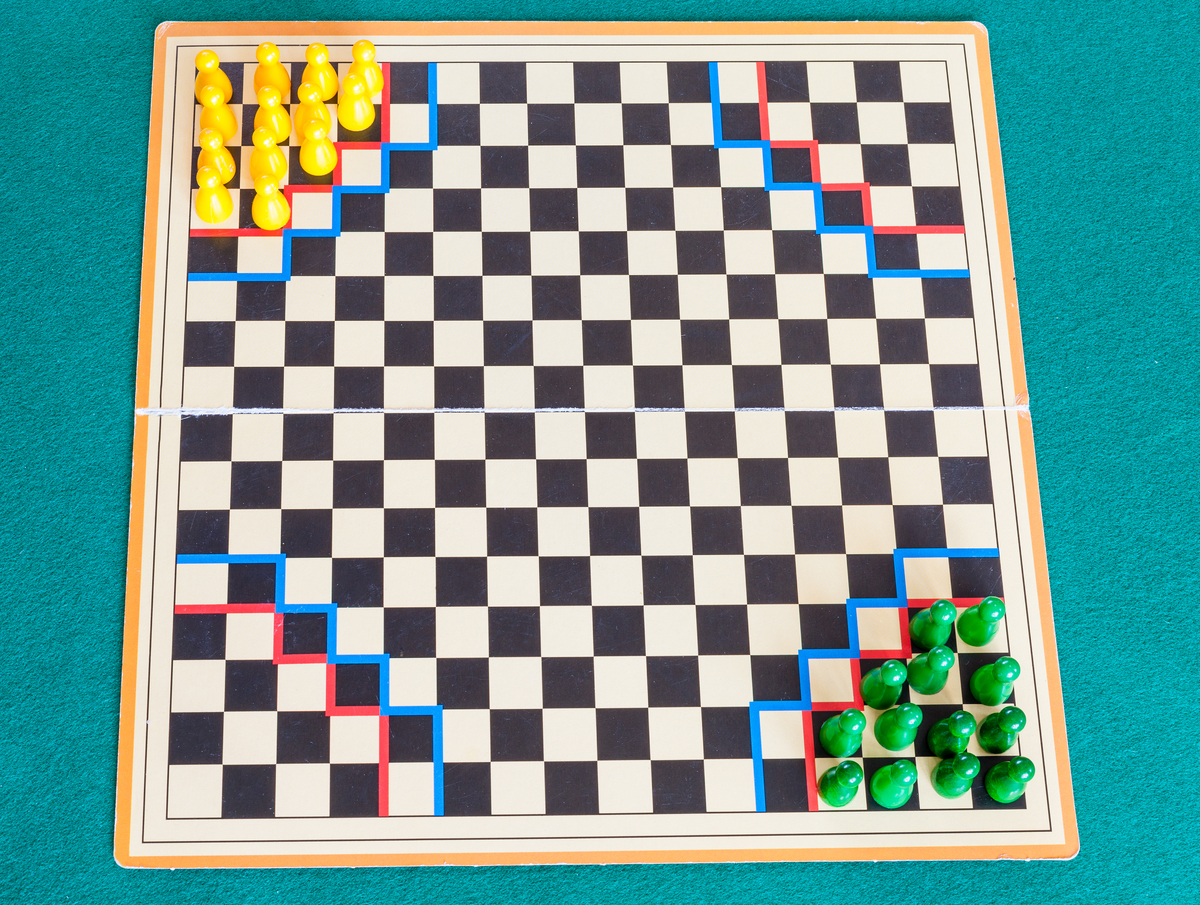
The piece that was jumped over is unaffected and remains on the board. Place the piece in the empty square on the opposite side of the jumped piece. An adjacent piece of any color can be jumped if there is an adjacent empty square on the directly opposite side of that piece. One or more jumps over adjacent pieces:. Place the piece in an empty adjacent square. Each player's turn consists of moving a single piece of one's own color in one of the following plays:. Pieces can move in eight possible directions (orthogonally and diagonally). Players randomly determine who will move first. Valid (green) and invalid (red) moves of a white pawn in Halma On each turn, a player either moves a single piece to an adjacent open square, or jumps over one or more pieces in sequence. For four-player games played in teams, the winner is the first team to race both sets of pieces into opposing camps. The game is won by being first to transfer all of one's pieces from one's own camp into the camp in the opposing corner. The game is played by two or four players seated at opposing corners of the board. Piece colors are typically black and white for two-player games, and various colors or other distinction in games for four players. Pieces may be small checkers or counters, or wooden or plastic cones or men resembling small chess pawns. 
The gameboard is checkered and divided into 16×16 squares. His inspiration was the English game Hoppity which was devised in 1854. Halma (from the Greek word ἅλμα meaning "jump") is a strategy board game invented in 1883 or 1884 by George Howard Monks, an American thoracic surgeon at Harvard Medical School.

Board with "camps" marked for two players (blue) and four players (red)






 0 kommentar(er)
0 kommentar(er)
